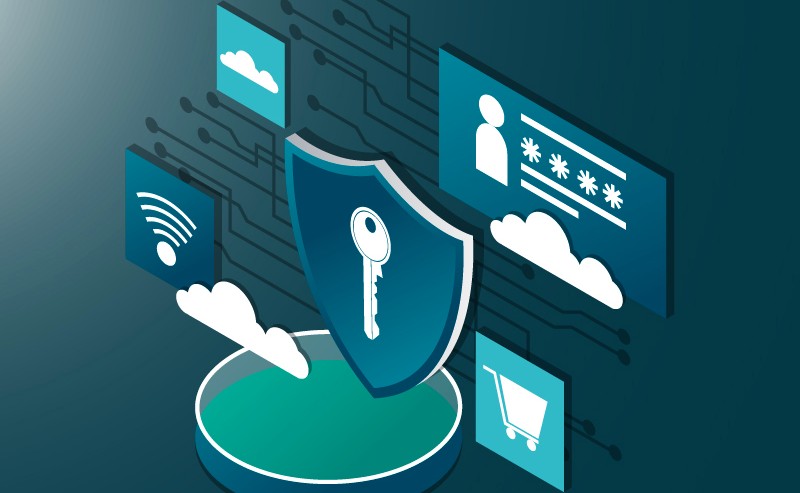Anti-Spam Solutions Vs. DMARC: Understanding The Difference Between Their Functioning & Why They Are Crucial
Understand How Anti-Spam Solutions And DMARC Work.
Every organization faces the continuous annoyance of spam emails daily. The spam clutters the inboxes, affects the servers’ working, and can even become the reason for the most significant security threat that an organization may have to confront. Today, the source of most of the cybersecurity breaches, from phishing attacks and malware-related email scams to CEO frauds and compromising of confidential business communication, is an unsolicited email or a spam message.
To manage spam emails and email-related threats, organizations employ various solutions such as dedicated anti-spam solutions and DMARC (Domain-based Message Authentication, Reporting & Conformance). Although these two solutions combat email-related threats to an organization in different ways, both serve the same central purpose, i.e., to protect the organization from threats such as phishing attacks. Let’s see how they are different and protect the organization in their different characteristic ways.
Table of Contents

Understanding Anti-Spam Solutions & Their Working
Anti-spam solutions make use of several algorithms to learn and identify how a spam email looks like. When the solution is applied to the email system, it follows specific protocols to distinguish between the spam and the inbox’s useful emails.
It employs sophisticated spam detection engines and advanced threat defense technologies to identify and detect spam and other email-related threats. After proper analysis of an email, it immediately blocks and restricts it before reaching the inbox if the software solution suspects that the email closely resembles a spam or phishing email.
The anti-spam solution applies various types of filters to check an email such as the ones listed below
- Content Filter: In this filter, the solution checks the email’s content to determine whether it is a spam or not.
- Header Filter: The solution looks at the email header to see if it contains any falsified information.
- Blacklist Filters: The anti-spam software usually has the list of known spammers who are blacklisted. It subjects the email to a check based on the list and stops the email from entering the user’s inbox if any match is found.
- Rule-Based Filter: In this filter, the solution works following the criterion set by the user, such as blocking specific senders and restricting messages containing particular texts.
- Permission Filter: The solution will allow only those emails pre-approved by the recipient to enter the email system.
- Challenge-Response Filter: Only those senders that have the code can send an email. They have to enter the code to gain permission to send the message.
What Is DMARC & How It Works For Safeguarding Emails Coming Through Your Domain
DMARC can be understood as an email authentication protocol designed to primarily safeguard the organization’s email domain from malicious actors who can use it for purposes like email spoofing or phishing scams. It keeps a check on the outgoing email from the domain, and the receiving server makes use of the DMARC data to verify whether the email is coming from an authentic source or not.
The DMARC is an addition to the existing email validation systems such as SPF (Sender Policy Framework) and DKIM (Domain Keys Identified Mail). It leverages the currently working email authentication techniques by adding an important function, i.e., reporting.
By adding a DMARC record to the DNS (Domain Name System) zone, the organization can get insights through reports regarding who sends emails on its behalf by using its domain. It will allow the organization to get complete details relating to the email channel and control the emails sent on its behalf. It helps the organization to protect itself against
- Phishing attempts made by scammers on the organization’s clients and customers by sending out emails to them using the organization’s domain
- Malicious actors’ attempts to do brand abuse by sending out unwelcome emails to people and initiate scams
- Malware and ransomware attacks that are sent out to trusted customers of the organization or business
- Spear phishing and CEO fraud emails sent to the organization’s employees from the email addresses of top officials to deceive them
Every organization wants to make sure that its customers and clients get only those messages that it has sent. That is why employing DMARC is essential. It provides certainty to the email receivers that they only receive emails from a legitimate source. It makes a positive impact on email delivery and prevents unauthorized individuals from using the organization’s domain, thus safeguarding its reputation.
Final Thoughts
Based on the above discussion on anti-spam solutions vs. DMARC, one can say that the former protects the organization explicitly against inbound phishing emails that are sent to an organization, especially to the inboxes of its employees. On the other hand, DMARC prompts the receiving servers to check emails coming from an organization’s domain to see if they are authentic or not.
In simple words, the anti-spam solution keeps a check on the incoming emails, and DMARC inspects the outgoing emails from a domain. Using DMARC, the organization can gain a complete insight into its email channel and outgoing phishing attacks from its domain, which had previously been only possible when the attacks had already occurred.
Hence, it would be right to say that both of these phishing protection solutions work differently and play an essential role in protecting a domain from any malicious threats which can be made through emails. With the high growth in spamming activities and malicious actors using more sophisticated techniques to get into the users’ inboxes, it will be the best to employ both anti-spam solutions as well as DMARC to get the high level of security an organization network needs in today’s uncertain digital world.
Join the thousands of organizations that use DuoCircle
Find out how affordable it is for your organization today and be pleasantly surprised.
Interested in our Partner Program for MSPs and VARs? Visit Our MSP Partner Program.
